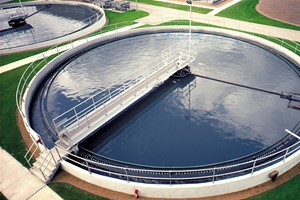Advancements in construction are propelling the industry into a promising future marked by innovative techniques and technologies. The Tor Alva, known as the White Tower, is emblematic of this transformative shift. Architects Michael Hansmeyer and Benjamin Dillenburger, in collaboration with ETH Zurich, are pioneering the construction of this towering structure in the picturesque village of Mulegns, nestled in the Swiss Alps.
The White Tower distinguishes itself through its utilization of 3D printing technology to create 32 intricate Y-shaped columns. Currently, eight of these columns have been successfully printed using concrete, with the aid of a specialized robotic extrusion process. Notably, the absence of conventional frameworks in this method is a notable departure from traditional construction practices, hinting at the potential for novel design possibilities.
Standing at an impressive height of 30 meters, the White Tower is envisioned as a cultural venue, specifically designed to host music and theatrical events. Its interior layout comprises five stories, featuring a spiral staircase that guides visitors through various chambers, ranging from spacious summit areas to more secluded spaces at the base. The construction is expected to be completed by the summer of 2024.
The Nova Fundazium Origen cultural foundation spearheads the creation of the White Tower, emphasizing the significance of digital manufacturing and computational design in contemporary architectural endeavors. This project serves as a demonstration of the financial and environmental benefits associated with 3D printing technology, highlighting its potential for future applications in the construction sector.
In parallel developments, other regions are also witnessing notable advancements in construction methodologies. The recent completion of the world's first 3D-printed mosque in the Kingdom of Saudi Arabia underscores the global momentum towards adopting innovative construction techniques. Additionally, initiatives such as ICON's introduction of modernized construction processes further contribute to this trend.
Overall, the convergence of computational design, digital manufacturing, and new materials is reshaping the future landscape of construction. As projects like the White Tower push the boundaries of conventional practices, they offer insights into the potential of emerging technologies to revolutionize the built environment. With continued research and development, the construction industry is poised to embrace a future characterized by efficiency, sustainability, and architectural innovation.
By Nour Fakharany













